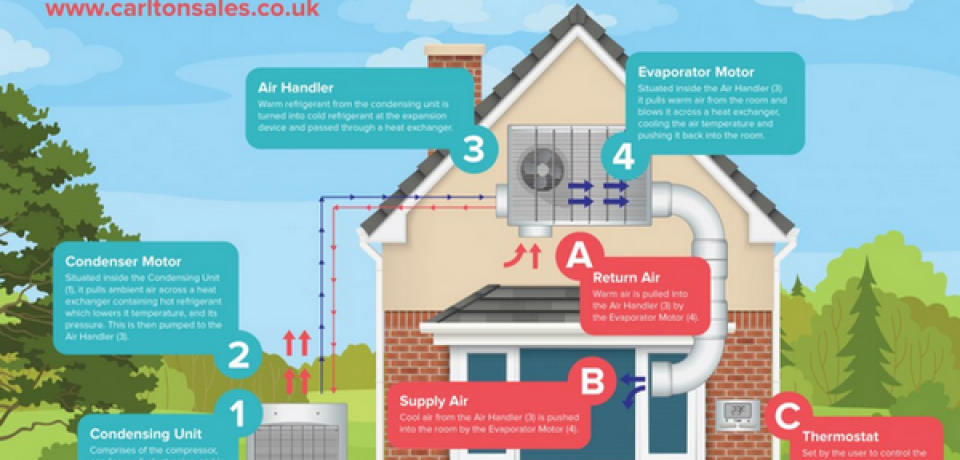The Ultimate Overview To Understanding Heat Pumps - Exactly How Do They Work?
The Ultimate Overview To Understanding Heat Pumps - Exactly How Do They Work?
Blog Article
Author-Forrest Bland
The best heatpump can save you substantial amounts of cash on power costs. They can likewise help in reducing greenhouse gas discharges, particularly if you make use of electricity in place of fossil fuels like lp and heating oil or electric-resistance heating systems.
Heat pumps function quite the like ac unit do. This makes them a viable choice to traditional electrical home heating systems.
Just how They Work
Heatpump cool down homes in the summertime and, with a little help from electricity or natural gas, they offer several of your home's heating in the winter. They're a good option for individuals that wish to decrease their use of fossil fuels but aren't ready to replace their existing heater and air conditioning system.
They count on the physical truth that even in air that appears also chilly, there's still energy existing: cozy air is constantly moving, and it intends to relocate right into cooler, lower-pressure environments like your home.
Many ENERGY STAR certified heat pumps run at near their heating or cooling ability throughout a lot of the year, lessening on/off cycling and conserving power. For the best performance, concentrate on systems with a high SEER and HSPF rating.
The Compressor
The heart of the heat pump is the compressor, which is additionally known as an air compressor. This mechanical streaming tool makes use of potential energy from power development to boost the pressure of a gas by minimizing its quantity. It is various from a pump in that it just services gases and can't deal with fluids, as pumps do.
just click the next website page enters the compressor with an inlet valve. It travels around vane-mounted arms with self-adjusting length that split the inside of the compressor, creating numerous dental caries of varying dimension. The rotor's spin forces these tooth cavities to move in and out of phase with each other, pressing the air.
The compressor draws in the low-temperature, high-pressure cooling agent vapor from the evaporator and presses it right into the hot, pressurized state of a gas. This procedure is duplicated as required to supply heating or air conditioning as required. The compressor additionally consists of a desuperheater coil that recycles the waste warmth and includes superheat to the refrigerant, transforming it from its fluid to vapor state.
The Evaporator
The evaporator in heat pumps does the exact same point as it carries out in refrigerators and air conditioning unit, transforming liquid cooling agent right into an aeriform vapor that gets rid of warm from the room. Heat pump systems would not function without this essential piece of equipment.
This part of the system lies inside your home or structure in an interior air handler, which can be either a ducted or ductless unit. It includes an evaporator coil and the compressor that compresses the low-pressure vapor from the evaporator to high pressure gas.
Heat pumps take in ambient warmth from the air, and afterwards use electricity to transfer that warmth to a home or service in heating mode. That makes them a great deal a lot more power effective than electric heating units or heating systems, and because they're making use of clean power from the grid (and not shedding fuel), they also produce far less discharges. That's why heatpump are such great ecological selections. (And also a big reason why they're becoming so popular.).
The Thermostat.
Heat pumps are great choices for homes in cool climates, and you can utilize them in combination with traditional duct-based systems or even go ductless. https://www.kshb.com/news/local-news/hvac-experts-provide-tips-on-preparing-for-summer-amid-supply-shortages 're a fantastic different to nonrenewable fuel source heating systems or standard electric furnaces, and they're extra sustainable than oil, gas or nuclear cooling and heating equipment.
Your thermostat is the most vital component of your heatpump system, and it functions very differently than a standard thermostat. All mechanical thermostats (all non-electronic ones) work by using compounds that alter dimension with raising temperature level, like coiled bimetallic strips or the increasing wax in a cars and truck radiator shutoff.
These strips consist of 2 different kinds of metal, and they're bolted with each other to form a bridge that completes an electrical circuit linked to your heating and cooling system. As the strip obtains warmer, one side of the bridge expands faster than the various other, which triggers it to flex and signal that the heating unit is required. When the heat pump is in home heating mode, the reversing shutoff reverses the flow of refrigerant, to make sure that the outdoors coil now works as an evaporator and the indoor cylinder ends up being a condenser.